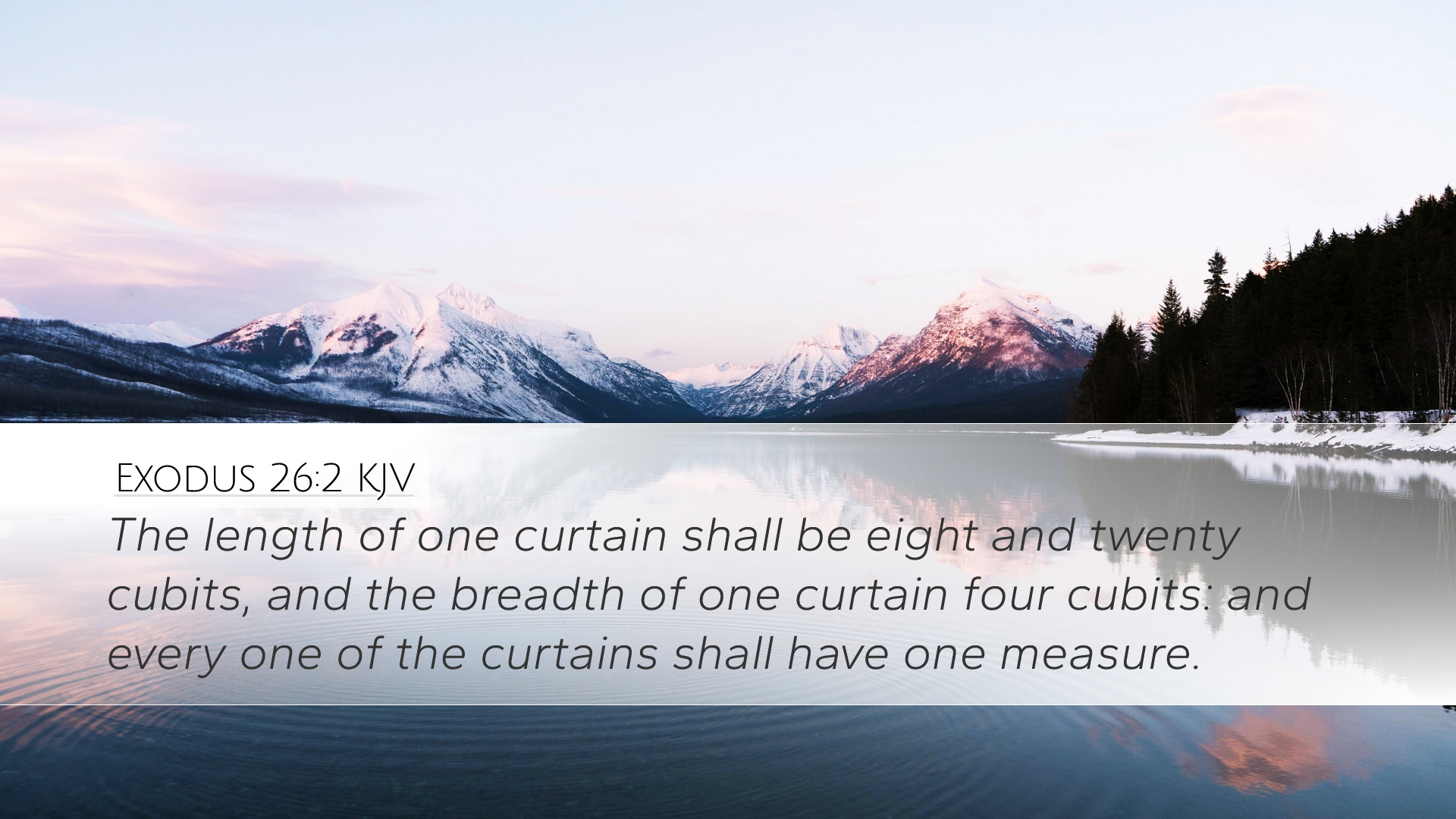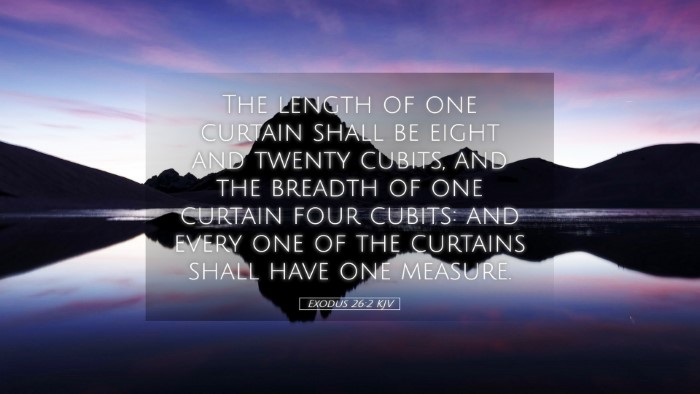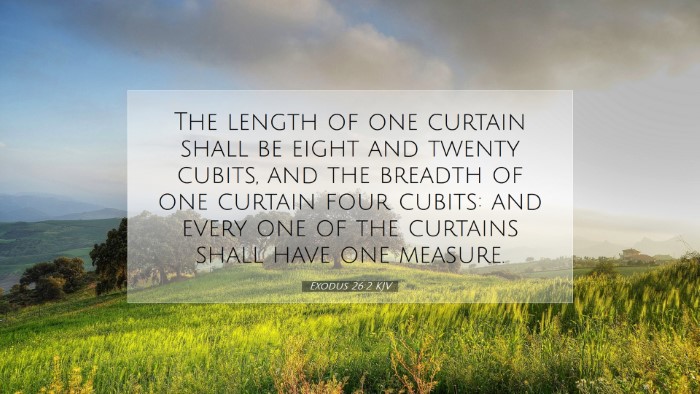Bible Commentary on Exodus 26:2
Exodus 26:2 states: "The length of one curtain shall be twenty-eight cubits, and the breadth of one curtain four cubits: all the curtains shall have one measure."
This verse is part of the detailed instructions given to Moses regarding the construction of the Tabernacle. Each element described in these chapters holds significant spiritual symbolism as well as practical importance in the worship practices of ancient Israel.
Contextual Overview
Exodus 26 is a pivotal chapter that outlines the specifications for the Tabernacle, which served as the dwelling place of God among His people. The construction details, including the measurements and materials used for the curtains, reflect both divine precision and the necessity of beauty and reverence in worship.
Interpretative Insights
1. Symbolism of the Curtains
Matthew Henry notes that the curtains represent the separation between the divine and human realms. The precise measurements given signify that God's holiness requires careful attention and reverence in approaching Him.
Albert Barnes elaborates that the dimensions speak to the unity of God's people; the uniformity in the curtains emphasizes the equality of believers in the sight of God, as every curtain was to be of the same measure.
2. The Number and Size of the Curtains
Adam Clarke explains that the reference to "twenty-eight cubits" indicates not only the physical size of the curtains but also suggests theological implications regarding completeness and God’s provision. The number "four" mentioned in the breadth symbolizes the universality of God’s presence, with four being a number representing the earth and, metaphorically, the four corners of the earth.
Moreover, Henry observes that the repetition of measurements ensures that God's specifications were meant to be strictly adhered to, highlighting the importance of obedience in the worship experience.
3. The Function of the Curtains
The curtains acted as a divider between the sacred and the profane, delineating the holy space in which God would meet with His people. Barnes points out the spiritual implications; just as the curtains denote a boundary, believers today are reminded that access to God, while available, is not to be taken lightly; this requires approach through the "curtain" of Christ's sacrifice.
In the same vein, Clarke remarks on the necessity of barriers in a holy worship space, as they protect the sanctity of God's dwelling and symbolize the separation of sin from holiness.
Theological Implications
1. Unity in Worship
As noted earlier, the identical measurements of the curtains symbolize the theological concept of unity within the body of Christ. All believers, regardless of their background, are called together for worship. This idea is reinforced by Clarke's commentary on how these curtains serve to unify both the elements of the Tabernacle and the worshipers who gathered there.
2. Divine Presence and Worship
Henry emphasizes the importance of divine presence in the worship space. The meticulous instructions provided were not arbitrary but purposeful, reflecting God's desire to dwell among His people. The care required to construct the Tabernacle serves as a reminder of the reverence demanded in our own worship experiences.
Barnes connects the physical architecture to the spiritual architecture of worship; just as the Tabernacle was designed to facilitate God's presence, so too must our lives and churches be designed to host His Spirit effectively.
Practical Applications for Today
1. Importance of Biblical Specifications
From Exodus 26:2, we learn the importance of adhering to biblical specifications in our worship practices. Each element in our worship should reflect God’s design, be it in church architecture, the structure of our worship services, or in personal devotion.
Henry encourages contemporary worship leaders and pastors to consider the holiness of their environments and to strive for an atmosphere that promotes a sense of God’s presence.
2. The Call to Holiness and Community
The detailed measurements and requirements remind believers of their call to holiness. As part of the body of Christ, we are to reflect unity and dedicated service. Barnes advises that this unity should permeate through communal worship, fostering a space where God's people can gather in harmony.
Clarke's thoughts on community also remind us that even as we gather in worship, we must remember the individual commitment each person brings into the assembly, thereby strengthening the whole body.
Conclusion
Exodus 26:2 serves as a focal point in understanding not just the physical construction of the Tabernacle but the profound theological implications embedded within the instructions. The measurements speak to the need for order, reverence, unity, and most importantly, the divine presence of God among His people. Pastors, students, theologians, and scholars alike are encouraged to reflect on these truths and consider how they apply to worship and community today. The Tabernacle stands as a testament to God's desire to be with His people, encouraging all to approach with respect, awe, and obedience.


